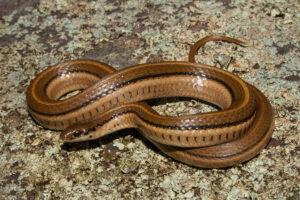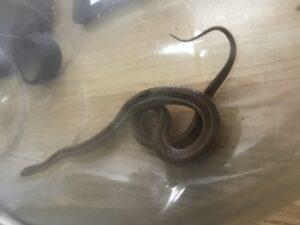This snake, first described by Alfredo Duges in 1897, is endemic to Mexico. The genus name Adelophis is derived from the Greek word ‘adelos’ meaning obscure or uncertain, referring to Duges’ uncertainty to the taxonomic classification. The species name, copei is in honor of American paleontologist and herpetologist Edward Drinker Pope.
Scientific Classifications
- Suborder:Serpentes
- Family:Colubridae
- Genus:Adelophis
- Species:A. copei
Conservation Status
Description
Size
The small and moderately slender snake can reach a maximum length of 15.4 inches (392 mm). The tail makes up one-fifth of the total length.
Color and Appearance
The dorsal side of the small and moderately slender colubrid has 3 pale and 2 dark bands in olive-brown. A deep black line runs from the eye to the anus, sometimes even further. Its belly is creamy yellow with grayish pigmentation at the rear end. The snake has a dark brown to olive-tan-colored head that is slightly wider than its neck. The snout region is broader and sub-conical in shape. The eyes are of moderate size with round pupils. Excepting the first row, all other dorsal scales are keeled.
Are They Dangerous to Humans
The non-venomous snake is not lethal. Its bite can only cause minor pain and swelling.
Cope’s Mountain Meadow Snakes at a Glance
Distribution
It lives in west-central Mexico, like the states of Michoacan, Hidalgo, northern Morelos, Jalisco, and Guanajuato.
Habitat
The semi-aquatic snake inhabits damp meadows, grassy swamps, and wetlands.
Predators
It has no natural predators. Its main threats are habitat loss on account of agriculture and human encroachment.
Diet
The feeding habits of this extremely rare snake are unknown.
Reproduction
Ovoviviparous (gives birth to live young from eggs that hatch inside the body)
Source
inaturalist.nz, inaturalist.org







